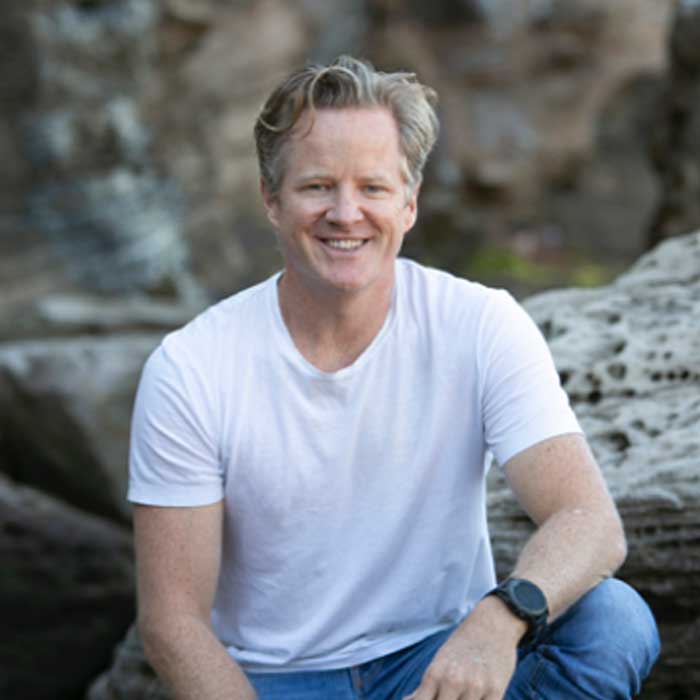I’m wedged in my bunk. One foot against the wall, pushing my back into the cushion so my position is secure while the boat is thrown 3m through the vertical plane down each wave every 5 seconds and yaws 2-3m on the horizontal plane. Her approach to the oncoming swell is approximately 45 degrees but some rogue waves are more head on. You know when one of these hits as the bow shoots up like a rocket ship and as Ahyoka falls off the precipice, you wait, teeth clenched for the landing. The hard, loud and terrifying landing. BANG! The noises always sound scarier in the cabin, so I find myself popping up to the cockpit regularly to escape them. Is she really designed for these kinds of forces? What are the things that could go wrong and how would I fix them?
It’s been a long night. I haven’t slept (I’m writing this the morning of day 12) and I’ve been dealing with a succession of squalls and tough sailing conditions since the early evening the day before. We’re now well and truly in the Tradewinds, which means a TWD of 90 degrees. My heading to the next way point between the Solomon Islands and Papua New Guinea some 1600nm away is approximately 135 degrees, which means I’ve been sailing close hauled all day. Ahyoka sails beautifully in flat sees with TWS of 10knots and we made some great miles, averaging 6 knots from 8am to 8pm. As night fell, the pressure slowly increased until it was blowing a constant 20knots at 9pm. The seas started to build, both the swell and the chop and I had to bear away 10-20 degrees to flatten out our path as Ahyoka does not like these short and sharp conditions. I had the 1st reef in the main and the about half the Genoa furled so it was shaped like a number 3 jib. The first squall hit around 10:30pm and winds were well above 30 knts. It hit with ferocity and without warning. I’d been downstairs feeling the boat and the waves and considering bearing away a little more to reduce the crash landing off the back of these very steep waves. As the first big gust hit, the boat healed 50 degrees to leeward and I dashed up-stairs dressed only in a flimsy pair of board shorts, quickly letting off the sheets for both the main and the jib and dialled in a further 60 degrees downwind on the auto-pilot. There’s no fighting a squall. Like so many things in life, its best to accept it for what it is and put the wind and the waves behind you, even if that means going backwards for a while.
Once the boat is heading downwind the waves flatten out dramatically, as does the apparent wind strength, so the intensity of the moment decreases, and things calm down slightly. It’s an intense moment to achieve this though. At 30 knots the rain stings when it hits your face, making it hard to see. The evaporative cooling effect of the wind and the rain means you’re feeling cold very quickly and the noise and pressure of the moment wipes any last vestiges of tiredness that may remain.
The calm I refer to once the boat is sailing downwind is only in respect to the boat. The skipper is far from calm. You can’t see the wind, the seas, the waves and the oncoming clouds at night so all you can do is “feel” the weather, “feel” the boat and “feel” the waves, discarding any unused senses and fine tuning the ones remaining, which can help you understand what’s happening outside and therefore how you can tune the sails and adjust the boat to full effect. It means I find myself on deck most of the night sensing the wind shifts, increases and decreases in pressure and trying to sail the boat as best I possibly can. You run a fine line when things get windy and the seas build so it’s certainly not the time to let your guard down. You need to remain focussed on the task at hand. Everything else can wait.
The ocean seamlessly shifts from soothing and nurturing to indifferent and antagonising, even aggressive with little to no warning. Like the seasons, the weather and our own moods, we need to soak up the good times and hold on tight during the bad, knowing these too shall pass. I held on tight all night, accepting each successive squall with as much grace and positivity as I could muster and reminded myself to:
Just. Keep. Going.
There are many kinds of all-nighters. There’s the “staying up and finishing that assignment for Uni” all-nighter. There’s the “out with friends dancing till dawn all-nighter”, the “flying halfway around the world jet lagged” all-nighter, the “helping a loved one who’s sick” all-nighter and then there’s the Squall All-Nighter.
Unlike the others, the Squall All-Nighter is voluntary (I did choose to be here after all), terrifying and of an uncertain duration. You’re left feeling tired and hollow. The adrenalin that’s been coursing through your system for hours starts to dissipate and no amount of coffee is able to rejuvenate you. There’s the real possibility of more squalls to come, so you can’t shut down completely. You know you’re at the mercy of mother nature and so the only thing you can do is roll with it. Knowing it can’t last forever and that rest will be waiting for you when it passes.
I’m now a whole week’s sail from landfall (and therefore help) of any kind. This is the most remote I’ll be while I’m on this trip. The farthest away I’ve even been from humanity. In some respect, the Apollo astronauts were closer to mankind when they landed on the moon, at least from the perspective of how long they were away. I feel a bit like I’m on the moon right now, or a far-off distant planet. It’s hard to put into words what it feels like to be so remote. So removed. So alone. The simplest way to put it is I feel alive in a way I never have before. I don’t feel lonely. It’s weird.
It just, well… is.
Post Script:
I can say that your comments were a warm and welcome boost after the night I just had. I don’t have internet access so can’t view them on the blog, but Lachie emailed some through overnight and I couldn’t think of a better way to rebuild one’s spirits after a night like that than by reading your kind words. The right words at the right time have the ability to move and to inspire. Yours did both, just when they were needed. Thank you, dear Reader.


7 Responses
Sounds like a rough go so far, but if she (and you) survived four peaks, she can handle it. Stay safe, sail fast!
My dear Rory! Its been very inspiring to read your posts and be part somehow of such a life enrichment adventure. I have learned so much by your courage, tenacity and mind strength. Please take care and hope to see u soon!
Rors – I’ve made it my daily routine to read your blog. It’s ironically giving me some solace and a great sense of adventure. Your writing is a pleasure to read and I feel as if I am there with you, feeling the weather and constantly reviewing the instruments to ensure the safest and best route/options at any given moment. As someone who’s sailed in some pretty sketchy conditions (nothing like what you’re experiencing as a solo sailor), but I can feel your stress and anxiety in those moments as you’ve put thoughts and experience into words. Your description of boat settings from sails, jobs and directions to conditions has been perfectly descriptive and really takes us there with you. In typical Rory fashion, you’re still offering much needed inspiration to your friends, even a week from civilization on your own in the middle of the Pacific Ocean! I show Lucas where you are on your tracker and it is difficult to translate such a distance on a small screen when the reality is so much more intense and extreme. We love you and are with you, everyday in as many ways that we can share those experience with you. Just. Keep. Going! Much love. Xo
Rory, you have had an emotional rollercoaster… followed by a very rocky ride. Loud, cold wet, scary, exhilarating, uncomfortable down below decks…. Life at 45 deg is quite a challenge!
We are with you and willing you on safely.
Please confirm (as I am sure you are) that you are wearing your lifejacket and are tethered when on deck in these conditions, and hopefully have a PLB… with or without the flimsy Boardshorts!
You’ll soon be Reaching, so hang on, and hang in there.
We are all willing you on and looking forward to the next instalment.
Bonnie Scotland
There ain’t no medal for your kind of bravery. Myself, Fay and Sam are all rooting for you Rory, and though I have downed many cold beers in my life, I cannot imagine just how satisfying and rewarding that 4X or Fosters will be when you get to Cairns. Your understandable bout of the miseries 2 days ago had me tears. When I am down, I try to remind myself to always stay on the right side of happy, if I can. Stay safe Rory.
Uncle Donald.
Dear Rory, keep on going! Safe sails! We are with you from the other side of the Globe!
This is a beautifully written blog, Rory. We hope your journey brings a destination that is calm, happy, peaceful and content.